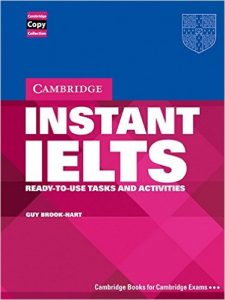نمونه سوالات اسپیکینگ آیلتس درباره آموزش (پارت 1 2 3)
IELTS Speaking Questions with Band 9 Answers about Plants
در این بخش بیش از 20 نمونه سوال اسپیکینگ آیلتس نمره 9 از آخرین سوالات گزارش شده از سنترهای ایرانی و خارجی برگزار کننده آیلتس مربوط به پارت 1، 2 و 3 درباره موضوع “رسانه ها” را برای شما فهرست کرده ایم. در ادامه همچنین نکات گرامری، لغات و دلایل دریافت نمره 9 را توضیح داده ایم. 1000 نمونه سوالات اسپیکینگ آیلتس با جواب PDF پارت 1 2 3 پیشنهاد بعدی ما به شما عزیزان است.
نمونه سوالات اسپیکینگ آیلتس درباره موضوع رسانه ها (پارت 1)
IELTS Speaking Part 1 Questions and Answers: Media
1. What type of media do you often use?
I frequently use digital media, particularly news apps and social media platforms like Twitter. These provide real-time updates on current events, which I find invaluable for staying informed. Additionally, I enjoy podcasts for in-depth discussions on diverse topics such as technology and culture. Occasionally, I watch traditional television for documentaries or interviews. The convenience and accessibility of digital media appeal to me most, as it allows me to tailor my consumption to my interests and schedule. However, I make an effort to verify information from multiple sources to ensure accuracy and reliability.
2. How often do you watch the news?
I watch or read the news daily, typically in the mornings. Starting my day with global updates helps me stay informed about important issues, ranging from politics to environmental challenges. I prefer using reputable online platforms, as they offer concise and reliable information. Occasionally, I listen to news podcasts during my commute, which is a productive way to utilize travel time. While staying updated is essential, I also limit my news consumption to avoid feeling overwhelmed by negative stories. This balance ensures I remain informed without compromising my mental well-being.
3. Do you prefer reading news online or in print? Why?
I prefer reading news online due to its convenience and immediacy. Digital platforms allow me to access breaking news instantly and explore a wider range of sources. Moreover, online media often includes interactive features such as videos and graphs, which enhance my understanding of complex issues. In contrast, printed newspapers, while traditional and credible, lack real-time updates and are less environmentally friendly. However, I occasionally enjoy reading print media for its tactile experience and in-depth reporting. Overall, the accessibility and versatility of online news make it my primary choice.
4. Do you follow any specific journalists or media outlets?
Yes, I follow several journalists and media outlets renowned for their credibility and insightful reporting. For instance, I often read articles by investigative journalists who specialize in uncovering social injustices or global corruption. Additionally, I subscribe to platforms like BBC and The Guardian, which provide balanced coverage of international affairs. Following trusted journalists helps me gain a deeper understanding of complex issues and avoid misinformation. I also appreciate their ability to present diverse perspectives, fostering critical thinking. This selective approach ensures I consume news that is both reliable and thought-provoking.
5. Do you think people spend too much time on social media?
Yes, I believe excessive social media use has become a concern. While platforms like Instagram and TikTok offer entertainment and connectivity, they often consume significant amounts of time that could be spent more productively. Overuse can lead to distractions, reduced focus, and even mental health issues like anxiety. However, social media also has positive aspects, such as raising awareness about global issues or fostering communities. The key lies in moderation—setting time limits and prioritizing meaningful interactions over mindless scrolling can help individuals maintain a healthier balance in their lives.
6. How do you usually consume entertainment media?
I typically consume entertainment media through streaming platforms like Netflix or YouTube. These services offer a vast library of movies, series, and documentaries that cater to various interests. I also enjoy listening to music on Spotify and watching live performances or interviews online. Occasionally, I explore video blogs, as they provide a personal touch to content. The convenience of on-demand access allows me to watch or listen to media at my own pace. While I appreciate these platforms, I ensure I manage my screen time effectively to avoid overindulgence.
7. How has the way you consume media changed over time?
My media consumption habits have evolved significantly due to advancements in technology. In the past, I relied on newspapers and television for news and entertainment. However, with the rise of smartphones and the internet, I now access most media through digital platforms. Streaming services have replaced traditional TV, and podcasts have become my go-to for in-depth discussions. This shift has made media more interactive and personalized, though it requires greater vigilance against misinformation. Despite these changes, I still value traditional media for its credibility and historical significance.
8. Do you think advertisements in the media are effective?
Yes, advertisements can be highly effective, especially when they are creative and targeted. For instance, ads that tell a compelling story or use humor often resonate with audiences, making products memorable. Digital media has further enhanced advertising effectiveness by using algorithms to reach specific demographics. However, excessive or intrusive ads can irritate viewers, diminishing their impact. Personally, I appreciate well-designed advertisements that provide useful information without disrupting my media experience. Striking a balance between promotion and user satisfaction is key to successful advertising.
9. How do you decide which news to trust?
I trust news from sources with a proven track record of accuracy and impartiality. Reputable outlets often provide detailed citations and avoid sensationalist headlines. I also cross-check information from multiple sources to ensure consistency and reliability. Journalistic transparency, such as clearly distinguishing between opinions and facts, further enhances credibility. Additionally, I look for balanced reporting that presents diverse perspectives, as it indicates objectivity. By combining these strategies, I can filter out unreliable news and stay well-informed without falling prey to misinformation.
10. Do you think traditional media is losing its importance?
While traditional media faces challenges, it still holds significant importance. Newspapers and television offer in-depth reporting and often maintain higher editorial standards than many online sources. However, digital media’s convenience and real-time updates have shifted public preference. Traditional media has adapted by establishing online platforms, blending credibility with accessibility. Although its audience may have declined, traditional media remains a trusted source for reliable information. Its role in investigative journalism and archival documentation ensures its relevance in an increasingly digital world. Balancing both forms can provide comprehensive access to news and entertainment.
نمونه سوالات اسپیکینگ آیلتس درباره موضوع رسانه ها (پارت 2)
در این بخش یک نمونه سوال اسپیکینگ آیلتس درباره رسانه ها را به همراه پاسخ نمره 9 آن خواهیم دید. در این بخش شرکت کننده می باید 1 دقیقه خود را برای سوال مطرح شده آماده کرده و 2 دقیقه مشغول پاسخ به سوالات درج شده روی کارت سوال باشد.
IELTS Speaking Part 2 Question: Media
Describe a piece of news that you recently read, heard, or watched on media.
You should say:
what the news was about
where you saw or heard it
what details you learned
and explain why it was interesting or important to you.
Answer:
A piece of news that caught my attention recently was about a groundbreaking climate agreement reached at an international summit. I came across this story while scrolling through a reliable news app on my smartphone. The article provided an in-depth analysis of the accord, which aims to reduce global carbon emissions significantly over the next decade. It highlighted the collaboration between major economies like the United States and China, which had previously struggled to align on environmental policies.
The news also delved into key provisions of the agreement, such as investing in renewable energy, phasing out coal, and funding climate adaptation programs for developing countries. What struck me was the inclusion of legally binding commitments, ensuring accountability—a significant departure from prior accords that lacked enforceability.
This story resonated with me because climate change is an issue that affects everyone, regardless of nationality or background. The agreement signified a rare moment of unity in a fragmented world, providing hope for meaningful progress. It was particularly compelling to learn about the role of youth activists, whose persistent efforts influenced the negotiations.
Overall, this news not only informed me about global initiatives but also inspired me to take personal actions, like reducing waste and supporting sustainable brands. It reinforced my belief that media can be a powerful tool to educate, motivate, and drive collective change.

نمونه سوالات اسپیکینگ آیلتس درباره موضوع رسانه ها (پارت 3)
در این بخش چند نمونه سوال اسپیکینگ آیلتس درباره رسانه ها در پارت پایانی را میبینیم. این سوالات معمولا پیچیده تر بوده و برای پاسخ به آن ها سطح آمادگی بالاتری نیاز است.
IELTS Speaking Part 3 Questions and Answers: Media
1. How has social media changed the way people communicate?
Social media has revolutionized communication by enabling instant connectivity and bridging geographical gaps. Platforms like WhatsApp and Instagram facilitate real-time interactions, fostering relationships despite physical distance. However, this shift has also led to a decline in face-to-face communication, as many now prefer digital exchanges. Additionally, social media amplifies self-expression through photos, videos, and opinions, reaching a global audience. On the downside, it often promotes superficial connections and can lead to misunderstandings due to the absence of non-verbal cues. Overall, while it has enhanced accessibility and speed, it challenges the depth and authenticity of interactions, emphasizing the need for balance between digital and personal connections.
2. What are the advantages and disadvantages of using media for education?
Media significantly enhances education by providing access to diverse resources, including online courses, documentaries, and interactive tools. Platforms like YouTube and Khan Academy simplify complex topics through visual aids, making learning more engaging. Furthermore, media fosters global collaboration, allowing students to exchange ideas across borders. However, it has drawbacks, such as distractions caused by unrelated content and the spread of misinformation. Over-reliance on digital media may also reduce critical thinking and creativity, as students might prefer ready-made solutions over independent exploration. Despite these challenges, integrating media into education can be transformative when used responsibly and combined with traditional teaching methods.
3. How does media influence public opinion?
Media profoundly shapes public opinion by disseminating information and framing narratives. News outlets, for instance, highlight specific stories, influencing perceptions of importance and urgency. Social media further amplifies this impact by enabling rapid information sharing and public discourse. However, the prevalence of biased reporting and fake news can distort opinions and create polarization. The echo chamber effect, where people consume content aligning with their beliefs, reinforces pre-existing views, limiting exposure to diverse perspectives. Thus, while media empowers individuals to stay informed and participate in societal debates, it also necessitates critical evaluation to discern accurate and unbiased information.
4. Should governments regulate the media?
Government regulation of media is a contentious issue, balancing freedom of expression with public welfare. Regulations can prevent the spread of harmful content, protect privacy, and curb misinformation, fostering a responsible media environment. However, excessive control risks censorship, stifling diversity of opinion and press freedom. For instance, authoritarian regimes often misuse regulations to suppress dissent and manipulate public narratives. A balanced approach, emphasizing transparency and accountability, is essential. Independent regulatory bodies can oversee media practices, ensuring ethical standards without undermining democratic values. Ultimately, regulation should promote truthful reporting and safeguard societal interests while upholding individual rights.
5. How has the rise of influencers changed traditional advertising?
Influencers have redefined advertising by creating relatable, trust-based connections with audiences. Unlike traditional ads, influencer campaigns often feel authentic, as they showcase products in everyday contexts. This approach enhances consumer trust and engagement, particularly among younger demographics. However, it has disrupted traditional advertising industries, as brands allocate more budgets to influencer partnerships. Concerns about transparency arise when influencers fail to disclose sponsored content, misleading audiences. Additionally, over-commercialization risks diminishing authenticity, leading to skepticism. Despite these challenges, influencer marketing remains a powerful tool, blending personal storytelling with brand promotion, transforming consumer behavior and advertising strategies.
6. Why do some people believe that media is biased?
Media bias stems from selective reporting, where outlets prioritize stories aligning with their agendas or target audiences. Ownership influences often dictate editorial policies, favoring political or corporate interests. For instance, conservative or liberal-leaning outlets may present the same event differently, shaping opinions accordingly. Moreover, sensationalism, aimed at boosting ratings or clicks, can exaggerate facts, distorting reality. While some biases are unintentional, arising from human perspectives, deliberate misrepresentation undermines public trust. Critical media literacy, enabling audiences to analyze sources and verify information, is crucial for mitigating bias and fostering informed decision-making.
7. What role does media play in shaping cultural values?
Media acts as a cultural mirror, reflecting and influencing societal values. Through films, television, and social media, it portrays lifestyles, traditions, and ideals, shaping public perceptions. For instance, global media often promotes Western culture, influencing fashion, language, and behavior worldwide. While this fosters cross-cultural understanding, it may also erode local traditions, leading to cultural homogenization. Moreover, media representations impact social norms, such as gender roles or beauty standards, sparking debates on inclusivity and diversity. By responsibly showcasing varied perspectives, media can preserve cultural heritage while fostering progressive values, striking a balance between tradition and modernity.
8. Do you think the media has a responsibility to report only positive news?
While reporting positive news uplifts public morale, media’s primary responsibility is to present accurate and comprehensive information. Solely focusing on positivity may obscure critical issues, depriving audiences of necessary awareness. Negative news, though disheartening, often sparks essential discussions and solutions. For instance, coverage of environmental crises has driven global action on climate change. However, sensationalizing negativity for profit undermines public trust and exacerbates anxiety. A balanced approach, highlighting both challenges and achievements, ensures informed and engaged audiences. By maintaining objectivity and ethical standards, media can responsibly fulfill its societal role.
9. How can people protect themselves from misinformation in the media?
Combating misinformation requires critical thinking and proactive measures. Verifying sources is crucial; reliable outlets often adhere to journalistic standards and cite evidence. Cross-checking information across multiple platforms helps identify inconsistencies, reducing the risk of manipulation. Digital literacy programs can empower individuals to discern credible content and recognize biases. Additionally, avoiding sensational headlines and seeking context prevents misinterpretation. Social media platforms must also implement stricter content moderation to curb fake news proliferation. By fostering skepticism and promoting media literacy, individuals can navigate the digital landscape responsibly, making informed decisions based on trustworthy information.
10. What impact has 24/7 news coverage had on society?
Round-the-clock news coverage has heightened public awareness, ensuring timely updates on global events. This constant flow of information keeps societies informed, enabling quick responses to emergencies. However, it also leads to information overload, causing stress and desensitization to significant issues. Sensationalism, driven by competition for viewership, often prioritizes speed over accuracy, spreading misinformation. The emphasis on breaking news can overshadow in-depth analysis, affecting audience understanding. While 24/7 coverage democratizes information access, its societal impact depends on ethical journalism and audience discernment. A balanced consumption approach, prioritizing quality over quantity, ensures meaningful engagement with current affairs.
عوامل تاثیر گذار در رسیدن به نمره 9 در پاسخ سوالات اسپیکینگ آیلتس درباره رسانه ها (در بالا)
Factors Contributing to Band 9 Responses:
- Grammar:
- Wide range of complex structures: conditionals, passive voice, and relative clauses.
- Accurate use of tense to match context (e.g., present perfect for ongoing impacts).
- Variety in sentence types, including compound and complex sentences.
- Vocabulary:
- Sophisticated word choices: “revolutionized,” “disseminating,” “homogenization.”
- Use of topic-specific terminology: “misinformation,” “media literacy,” “sensationalism.”
- Effective paraphrasing to avoid repetition and demonstrate lexical flexibility.
- Coherence and Cohesion:
- Logical progression of ideas with cohesive devices: “However,” “For instance,” “On the downside.”
- Clear topic sentences and supporting details for each argument.
- Fluency and Ideas:
- Relevant and well-developed points with appropriate examples.
- Balanced perspectives, considering both positive and negative aspects.
These features collectively elevate the responses to Band 9.
تعیین سطح رایگان اسپیکینگ ❤️
نمونه سوالات اسپیکینگ آیلتس درباره موضوع رسانه ها پارت 1 2 3 را به همراه سمپل های نمره 9 آن ها با هم دیدیم. در ادامه نمونه سوالات دسته بندی شده اسپیکینگ آیلتس پیشنهاد آخر ما به دوستان گرامی هست. این نمونه سوالات اسپکینگ از پرتکرار ترین تاپیک های این بخش و همچنین جدیدترین موضوعات می باشند. این مجموعه توسط یکی از سایت های معتبر و فعال آیلتس تنظیم شده است. همچنین برای تعیین سطح و تعیین رایگان نمره اسپیکینگ و دریافت جدید ترین سمپل های نمره 9 در کانال تلگرام اسپیکینگ ما همراه باشید و به ادمین برای تعیین نمره اطلاع دهید.






